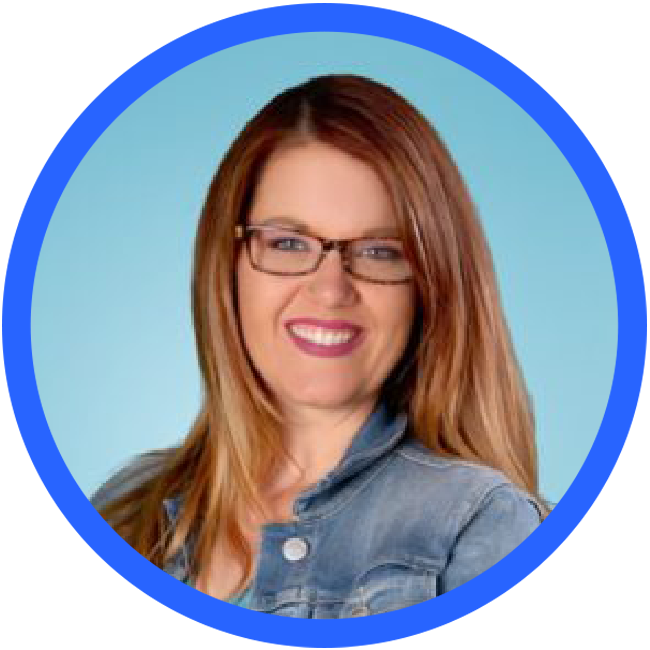Letting Go of Established Behaviors To Discover Something New


Ieasha Taitano is an executive leader, practitioner, and facilitator who builds shared service practices in innovation, design thinking, and product management. She has led transformations at companies like Waste Management, Travelers Insurance, Cisco, and as Head of Innovation at TracFone Wireless. She loves helping people break through established behavior and patterns to find their creative brilliance in designing new and novel services, products, and models.
Can you walk me through your introduction to Lean Startup and innovation, and what you’ve done with it since?
I came to innovation by way of project management. Early in my career I realized that I had a knack for spaces that were really ambiguous or leaned towards heavy change management. I found I really loved the design process and talking to customers and end users. It wasn’t until my time at Travelers Insurance that I got to really dig into design thinking, which was a relatively new methodology. In learning that process, it became really clear to me that there was a giant chasm between the idea that you formed in a good design thinking workshop and what teams would actually implement post workshop.
In researching how to make design thinking more viable, I found Eric’s first book — The Lean Startup. I got to try it first at Travelers Insurance, but I got to perfect the practice in my next job with LPL, a large financial services Firm. There I was able to try weaving together design thinking and Lean Startup in a more material way. That is when The Startup Way [Eric’s second book] came out. It was super helpful because it directly addressed some of the biggest problems we were facing. Things like “I don’t really know how to govern or account for this” or “How should we allocate money?” and “How do you manage cash versus expenses?” It was all of the details that Eric breaks down with his thinking on Innovation Accounting.
Those two books (The Lean Startup and The Startup Way) gave birth to our Lean Startup shop. Eventually I went from being the VP of Design Thinking to the VP of Product Management. We transformed the way we did product management and really changed up our products and service offering by expanding our view of the business model. My journey at LPL with Lean Startup really demonstrated to me that this tool box could successfully scout out, land and expand into new verticals, channels, or industries. From LPL, I went to Cisco’s Pro-services Group. Then I joined TracFone in 2019.
“We know we have a really innovative spirit in our DNA and we want to honor it and figure out how to institutionalize it.”
What do you see happening at TracFone in terms of not just product development, but the culture?
When I joined TracFone, it was like a blank slate. They knew they wanted to freshen up and modernize the way they were approaching innovation, but they really had no thoughts on how we should go about it. They just called me up saying, “Hey, we have a lot of design thinking going on, and we have these agile teams and they’re kicking butt, but we feel like the area that is still not really flowing is breakout products. We know we have a really innovative spirit in our DNA and we want to honor it and figure out how to institutionalize it.” They already had demonstrated a big appetite for change. So we accessed the landscape and built on what we already had. We were able to leverage our agile transformation as an opportunity to redefine what “product manager” meant. We rolled out “TracLabs,” which modified the new product development process to incorporate critical Lean Startup and ideation tools like metered funding, growth boards, data-driven decision-making, and robust concept validation. By piggybacking on what the team was already doing, and being cognizant of meeting people where they are at – we were able to stand up a practice pretty quickly.
What was that process like in terms of introducing new ideas and ways of working?
I didn’t have to argue that we had to listen to customers and that the focus isn’t an exec’s big idea. We had a robust CX and Design Thinking group that already fought the good fight. Also, because we were already doing Agile, I didn’t have to argue with them that you shouldn’t try to execute a whole thing at once because that has a lot of risk. So many of the foundational, philosophical premises were already living and breathing at TracFone. But before Lean Startup, our governance and funding model was set up for execution. People would make unfounded predictions about products to get capital dollars to build. But then no one ever circled back and asked “Did this product actually perform the way we said it would ?” So we were wasting a lot of money every year building new products – making bets – that we had little or no data validating how a customer would react. One of the major wins we had early on was convincing our executive team to use metered funding that was allocated via a Growth Board. That was actually our first step in this whole process because I knew if the team was allowed to continue getting funds in the old way, we’d never get them to change because they would have an alternative way to get money.
Then we presented the main conundrum to our executive team: we have a 22 million person subscriber base. No matter how long you’ve done this, no matter how much industry knowledge you have, or how many products you have rolled out before, or how great you think your idea is – there’s no way any human can accurately and consistently predict how 22 million people are going to respond to something. You just can’t. This is not because you’re good or bad at it, because that’s just an impossible task. We showed them it wasn’t really about being smart or not smart, or a good ideator or not good ideator. The metered funding and growth board showed the team that they couldn’t show up anymore and just say, “I have an idea, here is my speculative business case, please give me millions of dollars.” Now they had to come and say, “I have an idea. Here is the data indicating the customer reaction via validation testing. Here’s my business case based on the data I have collected. I would like a much more modest amount of money to go investigate the next level of fidelity.” And that naturally created this situation where if you ask once you’re going to get a yes or no, but if you ask more than once, now you have learnings to show. We used that squeeze tactic to bring everyone to the process.
Over the course of this multi-job, multi-year journey, have you started to look at non-work-related things through the lens of testing and iterating?
I’m a scientific thinker, so I think my brain can really see the logic of Lean Startup immediately. I totally do everything this way and live a pretty radical life because of it. For example, I live on a sailboat, about 250 square feet. A few years ago my kids went away to college and we sold our pretty sizable real estate holdings and downsized our life. We lived in an RV for a few years, traveling the country before we realized we wanted to travel the world, not just the continent. Now we’ve lived on a sailboat for two years. So we evaluate a lot of life decisions this way, along the thought process of: let’s not assume we know the answer, let’s think specifically about the problem and what desirability is. What are we willing to do? What aren’t we willing to do? What do we want? And then how do we not presume we know the answer to get to any of that stuff? Why don’t we test in small batches and see what works best? And that’s allowed us to make all kinds of flexible, cool – maybe eccentric – life choices.
It sounds like you have a great process for keeping your life on a steady path. What else do you do to de-stress and keep that balance?
I’m a hardcore introvert, and I think it’s interesting to be a facilitator of processes like Lean Startup because facilitation and coaching is a very extroverted task. You’re spending time with people, you’re checking in with them emotionally. It’s very ‘people aware’ and focused. So usually by the end of the day, I am done. I have a word I made up for it: gorked. It literally means my brain can’t function anymore. We live on the water and there are a million mindless, wonderful, quiet tasks on a sailboat and in the ocean that I love at the end of the day. I get on my snorkel gear and I go clean the underside of the boat. It does not need to be done as often as I do it, but it’s this mindless task that’s totally silent, under the water and requires nobody else, which is very satisfying. Also, I can always work on my free diving. I don’t need to be in the water to work on how long I can hold my breath (it’s a long time! I am a mermaid!). I like just throwing on my mask & snorkel and leaping off the back of the boat to do a little swim and see what I can see. Just time under the water is great.
What is an area in the world that you really want to see someone tackle with innovation?
It’s really, really hard to live on the ocean and not be super keenly aware of global warming and the human impact on the ocean. You see the signs every day. On a deserted island, there should be no trash. There should be no signs of humans at all, and you go on the beach and you literally can’t walk because there’s so much garbage–soda bottles, plastic bags, baby wipes, soda rings, chip bags, plastic straws. Or you go underwater in a place where you can see there’s a giant reef on your boat navigation. You sail out there and again, no people, it’s the middle of nowhere. You drop anchor and you get into the water and the reef is dead. It’s just a big, giant lonely white rock covered with fungus. I read the other day that the Atlantic Meridian Current is collapsing. It’s a current that has been around for as long as our continents have been in their current configuration, the collapse of which will fundamentally change weather, goods movement, and agriculture as we know it. It’s devastating. So I am very passionate about global warming and about living smaller with less consumption. I would love for people to embrace rethinking how they live–the space, the expense, the consumption. I think many people live the way they do because they aren’t thinking of the impact of it. No human needs 1000 square feet plus to live. The only thing that gives them is room to put “stuff”, and that “stuff” has cost beyond dollars. We can print dollars, but we can’t print a new home.
